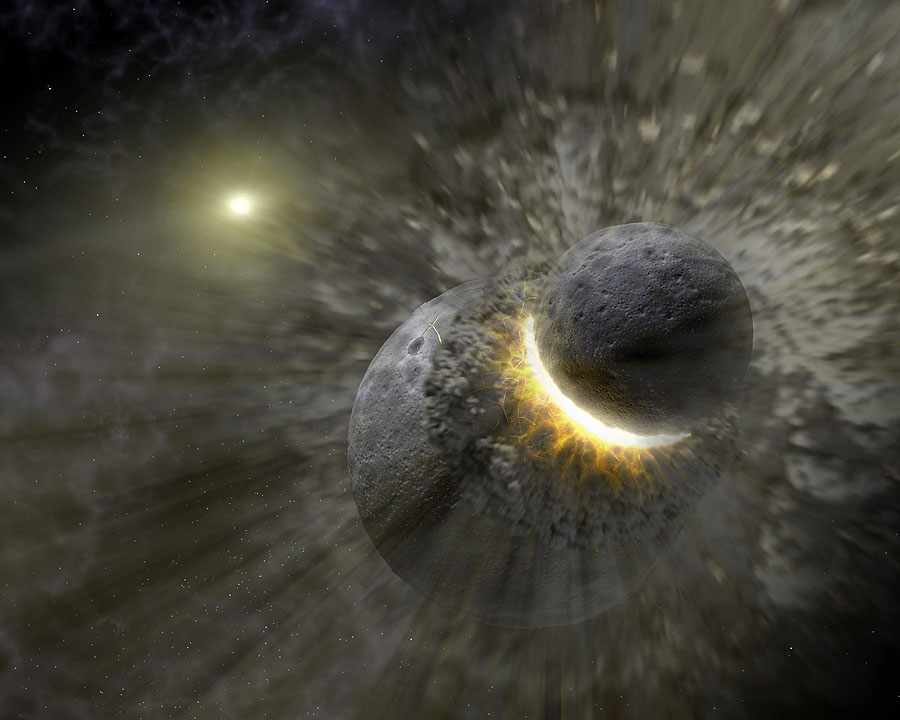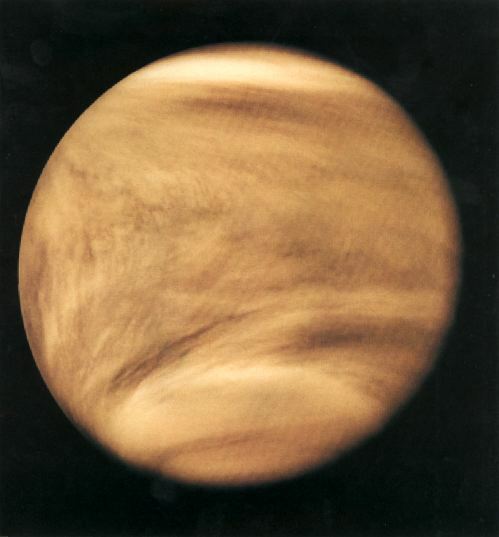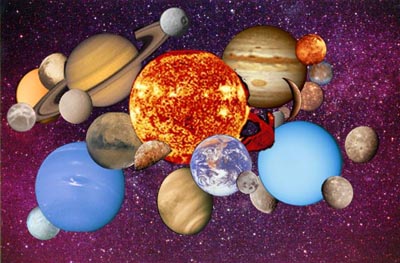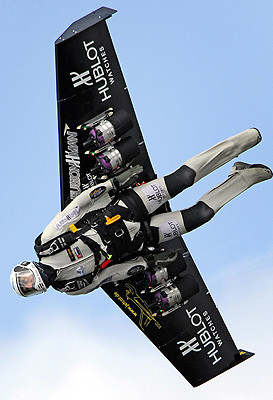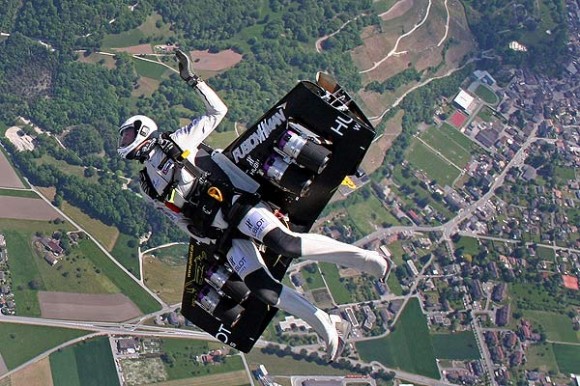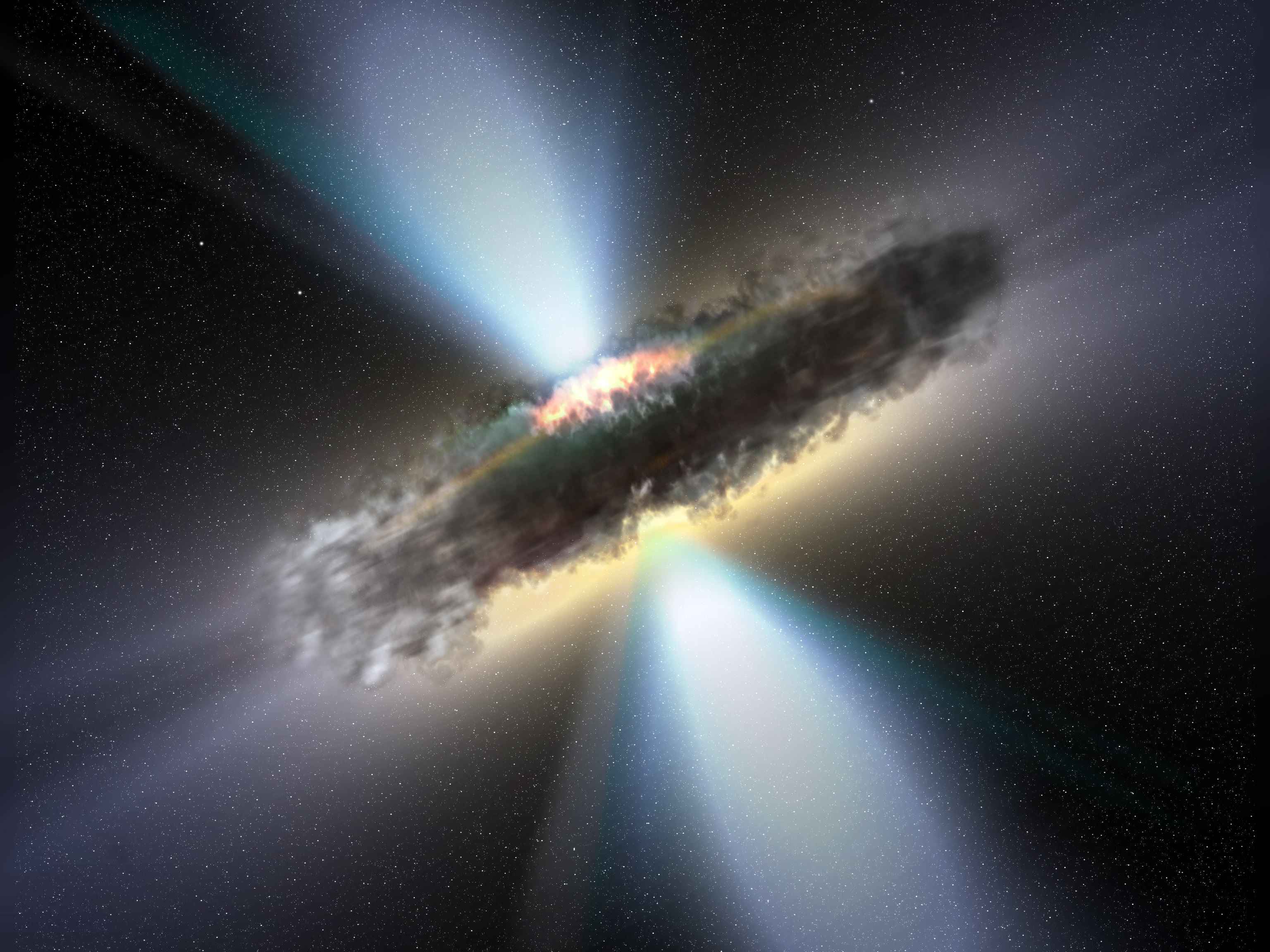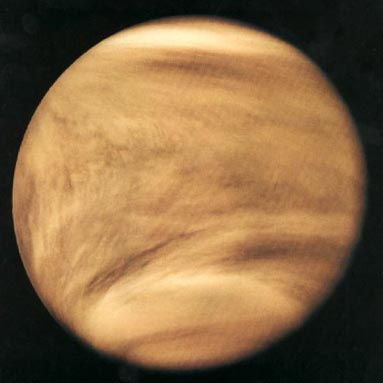We knew Mars was cold, but new observations from the Mars Reconnaissance Orbiter indicate that the crust and upper mantle of Mars are stiffer and colder than previously thought. And scientists say any liquid water that might exist below the planet’s surface, and any possible organisms living in that water, would be found deeper than anyone suspected.
Continue reading “Mars Is REALLY Cold”
Surface of Venus

The surface of Venus is a hellish place, with vast regions shaped by volcanic activity. In fact, Venus has many more volcanoes than Earth. It has more than 150 regions across the planet shaped by volcanoes.
And from this, you would think that Venus is more volcanic than Earth, but actually, it’s just that the regions of volcanic activity weren’t covered up as they have been here on Earth. The surface of Earth is constantly reshaped by tectonic activity, where plates on the crust of the planet float atop a layer of magma. These plates can slide underneath one another, and any features on the surface are destroyed.
For some reason, plate tectonics on Venus stopped billions of years ago. Planetary scientists think that the high temperatures on Venus shut down the cycle of plate tectonics. Volcanic features created on the planet billions of years ago are still visible, while they would have been obscured long ago on Earth.
Scientists think there is still active volcanism on Venus.
There are more than 1,000 impact craters on Venus, distributed across the planet. While craters are eroded here on Earth, they’re still in pristine condition on Venus. The craters range in size from 3 km to 280 km in diameter.
Retrograde Rotation of Venus
Of all the planets in the Solar System, Venus has a unique rotation. Seen from above, all of the planets rotate in a counter-clockwise direction. And this is what you would expect if all the planets formed from the same planetary nebular billions of years ago.
And yet, the rotation of Venus is clockwise, what astronomers call “retrograde”. Venus rotates backwards. Of course, since the length of a day on Venus is longer than a year, this rotation happens very slowly.
Why does Venus rotate backwards? One possibility is that Venus rotated normally when it first formed from the solar nebula, and then the tidal effects from its dense atmosphere might have slowed its rotation down.
Another theory is that a series of gigantic impacts early on in Venus’ history might have stopped or even reversed its rotation altogether. A similar impact happened to Earth billions of years ago, which formed the Moon.
The Diameter of Venus
The diameter of Venus is 12,100 km. That is 95% of the diameter of Earth. There are many similarities between the two planets, but there are many more extreme differences.
Venus and Earth are two of the four terrestrial planets in our Solar System. Mercury and Mars are the other two. Venus has a surface gravity that is 8.87 m/s2 or 90% of the gravity here on Earth. The planet has 86% of the volume that Earth has along with 82% of the mass. The planet’s density is nearly identical at 5.243 g/cm3. The similarities end there.
The average surface temperature of Venus is about 9 times higher than it is on Earth. It is 462°C there and the hottest deserts on Earth rarely see 50°C. The atmospheric pressure at surface level is 92 times greater than it is here, while the atmosphere itself contains 96% carbon dioxide. If a human managed to survive the pressure and could find a supply of oxygen, there is the sulfuric acid droplets and clouds along with heavy amounts of volcanic ash that are floating in the ”air”.
Like Earth, Venus has a magnetic field that protects it from the solar wind. Unlike Earth, its magnetic field is not created by a dynamo effect. In order for a planet to create its own magnetic field in this way, it has to have a liquid core that is spinning and the ability to release heat through convection. Venus is not capable of convection because the surface was nearly covered in lava between 300 and 500 million years ago. When that lava hardened it prevented the possibility of tectonic action and heat convection. The Venusian magnetic field is created by an interaction of the solar wind and the ionosphere of the planet. This reaction creates a weaker field than the one on Earth, so the planet is susceptible to cosmic radiation.
The entire diameter of Venus is covered in volcanoes and the remnants of volcanoes. There are 1,000 of them that are over 20 km in diameter scattered among thousands of smaller ones. There are some large impact craters, but no small ones. Any small meteorites would burn up in the thick atmosphere.
That is a lot of information to throw at you. Again, the diameter of Venus is 12,100 km and is very close to that of Earth. Hopefully, you found all of the information that you need and good luck with any further research you need to do.
We have written many articles about Venus for Universe Today. Here’s an article about the atmosphere of Venus, and here’s an article about how far Venus is from the Sun.
If you’d like more information on Venus, check out Hubblesite’s News Releases about Venus, and here’s a link to NASA’s Solar System Exploration Guide on Venus.
We’ve also recorded an entire episode of Astronomy Cast all about Venus. Listen here, Episode 50: Venus.
Reference:
NASA
Carnival of Space #54

We have another new host for the Carnival of Space. This week we look to David S. F. Portree and his blog Altair VI.
Click here to read the Carnival of Space #54
And if you’re interested in looking back, here’s an archive to all the past carnivals of space. If you’ve got a space-related blog, you should really join the carnival. Just email an entry to [email protected], and the next host will link to it. It will help get awareness out there about your writing, help you meet others in the space community – and community is what blogging is all about. And if you really want to help out, let me know if you can be a host, and I’ll schedule you into the calendar.
Finally, if you run a space-related blog, please post a link to the Carnival of Space. Help us get the word out.
Mapquesting the Solar System
Map generators like Mapquest and Yahoo! Maps have bailed me out quite a few times, helping me get where I needed to go. So imagine in the future, navigating on other bodies in our solar system and having the ability to find landmarks and destinations to point you in the right direction. This type of technology is now under development and could create three-dimensional “super roadmaps†of other planets and moons. In addition it could also provide robots, astronauts and engineers details about atmospheric composition, biohazards, wind speed and temperature, and could help land future spacecraft and more effectively navigate roving cameras across a Martian or lunar terrain.
The Rochester Institute of Technology’s Rochester Imaging Detector Laboratory (RIDL), in collaboration with Massachusetts Institute of Technology’s Lincoln Laboratory are developing a new type of detector that uses LIDAR (LIght Detection and Ranging), a technique similar to radar, but which uses light instead of radio waves to measure distances.
This is a new generation of high resolution, low power consuming optical/ultraviolet imaging LIDAR detectors that will significantly extend NASA’s science capabilities for planetary applications by providing 3-D location information for planetary surfaces and a wider range of coverage than the single-pixel detectors currently combined with LIDAR.
The LIDAR imaging detector will be able to distinguish topographical details that differ in height by as little as one centimeter.
“The imaging LIDAR detector could become a workhorse for a wide range of NASA missions,” says Donald Figer, director of the RIDL. “You can have your pixel correspond to a few feet by a few feet spatial resolution instead of kilometer by kilometer,” Figer says. “And now you can take LIDAR pictures at fine resolutions and build up a map in hours instead of taking years at comparable resolution with a single image.”
The device will consist of a 2-D continuous array of light sensing elements connected to high-speed circuits. The $547,000 NASA-funded program also includes a potential $589,000 phase for fabrication and testing.
LIDAR works by measuring the time it takes for light to travel from a laser beam to an object and back into a light detector. The new detector can be used to measure distance, speed and rotation. It will provide high-spatial resolution topography as well as measurements of planetary atmospheric properties: pressure, temperature, chemical composition and ground-layer properties. The device can also be used to probe the environments of comets, asteroids and moons to determine composition, physical processes and chemical variability.
The imaging LIDAR detector will be tested at RIDL in environments that mimic aspects of operations in NASA space missions.
Orginal News Source: EurekAlert
Elusive Molecule Found in Venus’ Atmosphere
Hydroxyl, an important but difficult-to-detect molecule, has been found in the upper atmosphere of Venus by the Venus Express spacecraft. This is the first time this molecule has been detected on another planet, and even though it is thought to be an “atmospheric cleanser,” knowing that it is part of Venus’ thick, greenhouse-like atmosphere will help scientists better understand the environment on our next-door planet. “Venus Express has already shown us that Venus is much more Earth-like than once thought. The detection of hydroxyl brings it a step closer,” said one of the Principal Investigators of the VIRTIS experiment on the Venus Express, Giuseppe Piccioni.
Hydroxyl is thought to be important for any planet’s atmosphere because it is highly reactive. On Earth it has a key role in cleaning pollutants from the atmosphere. On Mars, scientists believe it helps stabilize the carbon dioxide in Mars’ atmosphere, preventing it from converting to carbon monoxide. Also, hydroxyl is thought to play a vital role in sterilizing the Martian soil, making the top layers hostile to microbial life.
Hydroxyl is made up of a hydrogen and oxygen atom each. It has been seen around comets, but the method of production there is thought to be completely different from the way it forms in planetary atmospheres.
On Earth, the glow of hydroxyl in the atmosphere has been shown to be closely linked to the abundance of ozone. From this study, the same is thought to be true at Venus.
Venus Express has shown that the amount of hydroxyl at Venus is highly variable. It can change by 50% from one orbit to the next and this may be caused by differing amounts of ozone in the atmosphere.
“Ozone is an important molecule for any atmosphere, because it is a strong absorber of ultraviolet radiation from the Sun,” says Piccioni. The amount of the radiation absorbed is a key parameter driving the heating and dynamics of a planet’s atmosphere. On Earth, it heats the stratosphere (layer of the atmosphere) making it stable and protecting the biosphere from harmful ultraviolet rays.
Computer models will now be able to tell how this jump and drop in ozone levels over short intervals affects the Venus’ restless atmosphere.
Original News Source: ESA Press Release
“Fusionman” Soars the Skies (Gallery)
A Swiss adventurer who calls himself Fusionman tried out a new jet powered carbon wing, and successfully flew for 5 minutes on May 15 before landing with a parachute. Yves Rossy, a 48-year-old former air force pilot lit the jets on his wing and then jumped from a plane over Bex, Switzerland. He is the world’s first man to fly with jet powered wings.
Rossy performed his first official demonstration of his wings, which are 2.5 meters in diameter and comes with four tiny jets. Once in full flight, Rossy can reach speeds of up to 200km/hr, but he can only stay in the air for a maximum of ten minutes due to the small fuel capacity of his jets.
Rossy, who now works for the Swiss airline, first unveiled his design in 2004. Today he flew like a rocketeer above the Swiss Alps.
Rossy hasn’t always had an easy ride though — during one jump in 2005, he lost control of his wing and didn’t open his parachute until he was just 500 meters above ground.

Since first designing his wing, Rossy has performed more than 30 motorized flights, improving this first prototype with the help of his team. He’s looking to one day have take-off capability with his jet-powered wings. His motto for his test flights: “Always have Plan B ready.”
For more information about Fusionman, see his website. , or the English version
Original News Source: Brisbane Times, AFP
How to Escape From a Black Hole
According to Einstein’s theory of general relativity, black holes are regions of space where gravity is so strong that not even light can escape. And in the 1970’s physicist Stephen Hawking asserted that any information sucked inside a black hole would be permanently lost. But now, researchers at Penn State have shown that information can be recovered from black holes.
A fundamental part of quantum physics is that information cannot be lost, so Hawking’s claim has been debated. His idea was generally accepted by physicists until the late 1990s, when many began to doubt the assertion. Even Hawking himself renounced the idea in 2004. Yet no one, until now, has been able to provide a plausible mechanism for how information might escape from a black hole. A team of physicists led by Abhay Ashtekar, say their findings expand space-time beyond its assumed size, providing room for information to reappear.
Ashtekar used an analogy from Alice in Wonderland: “When the Cheshire cat disappears, his grin remains,” he said. “We used to think it was the same way with black holes. Hawking’s analysis suggested that at the end of a black hole’s life, even after it has completely evaporated away, a singularity, or a final edge to space-time, is left behind, and this singularity serves as a sink for unrecoverable information.”
But the Penn State team suggest that singularities do not exist in the real world. “Information only appears to be lost because we have been looking at a restricted part of the true quantum-mechanical space-time,” said Ashtekar. “Once you consider quantum gravity, then space-time becomes much larger and there is room for information to reappear in the distant future on the other side of what was first thought to be the end of space-time.”
According to Ashtekar, space-time is not a continuum as physicists once believed. Instead, it is made up of individual building blocks, just as a piece of fabric, though it appears to be continuous, is made up of individual threads. “Once we realized that the notion of space-time as a continuum is only an approximation of reality, it became clear to us that singularities are merely artifacts of our insistence that space-time should be described as a continuum.”
To conduct their studies, the team used a two-dimensional model of black holes to investigate the quantum nature of real black holes, which exist in four dimensions. That’s because two-dimensional systems are simpler to study mathematically. But because of the close similarities between two-dimensional black holes and spherical four-dimensional black holes, the team believes that this approach is a general mechanism that can be applied in four dimensions. The group now is pursuing methods for directly studying four-dimensional black holes.
The team’s work will be published in the May 20, 2008 issue of the journal Physical Review Letters.
Original News Source: Penn State Press Release
How Did Venus Get its Name?
Venus is one of the 5 planets visible with the unaided eye. This means that ancient people knew of Venus, and tracked its movements in the sky. Venus is the second planet away from the Sun and is the brightest object in the sky aside from the Moon and the Sun and it appears 10x brighter than the brightest star in the sky, Sirius. The clouds of Venus reflect the light of the sun like a giant mirror.
Venus was named after the Roman Goddess of Love (in Greek, Aphrodite). In ancient times, Venus was known to the Babylonians as Ishtar, the goddess of womanhood and love, so the planet has a long standing tradition of being associated with amore. Furthermore, the symbol for the planet Venus is the symbol for womanhood; a circle with a cross on the bottom.
The ancient Egyptians and Greeks thought Venus was two separate bodies and named them The Morning Star and the Evening Star until in Hellenistic times, people figured out that it was only one object.

